Using Lead Enrichment to Enable Your Sales Teams
Casey O'Connor
Lead enrichment is the process of enriching what’s already known about a lead with additional data points; it’s one of the most productive and impactful processes a sales team can invest in.
In fact, with research showing that bad lead data costs sales teams 550 hours and $32,000 per sales rep per year, sales and marketing teams literally can’t afford not to leverage lead enrichment and (and tech-forward lead enrichment tools, where appropriate) as a routine part of their sales process.
In this article, we’ll go over everything you need to know about lead enrichment, including what it is, why it’s so important, how to use it in your marketing and sales processes, and some potential challenges and ideas for navigating them.
Here’s what we’ll cover:
- What is Lead Enrichment?
- Understanding Lead Data and Its Impact
- Benefits and Challenges of a Lead Enrichment Program
- How to Utilize Lead Enrichment in Your Marketing Strategy
- How to Tell If Your Lead Enrichment Program Is Successful?
- Yesware Can Help Enable Your Sales Teams
What is Lead Enrichment?
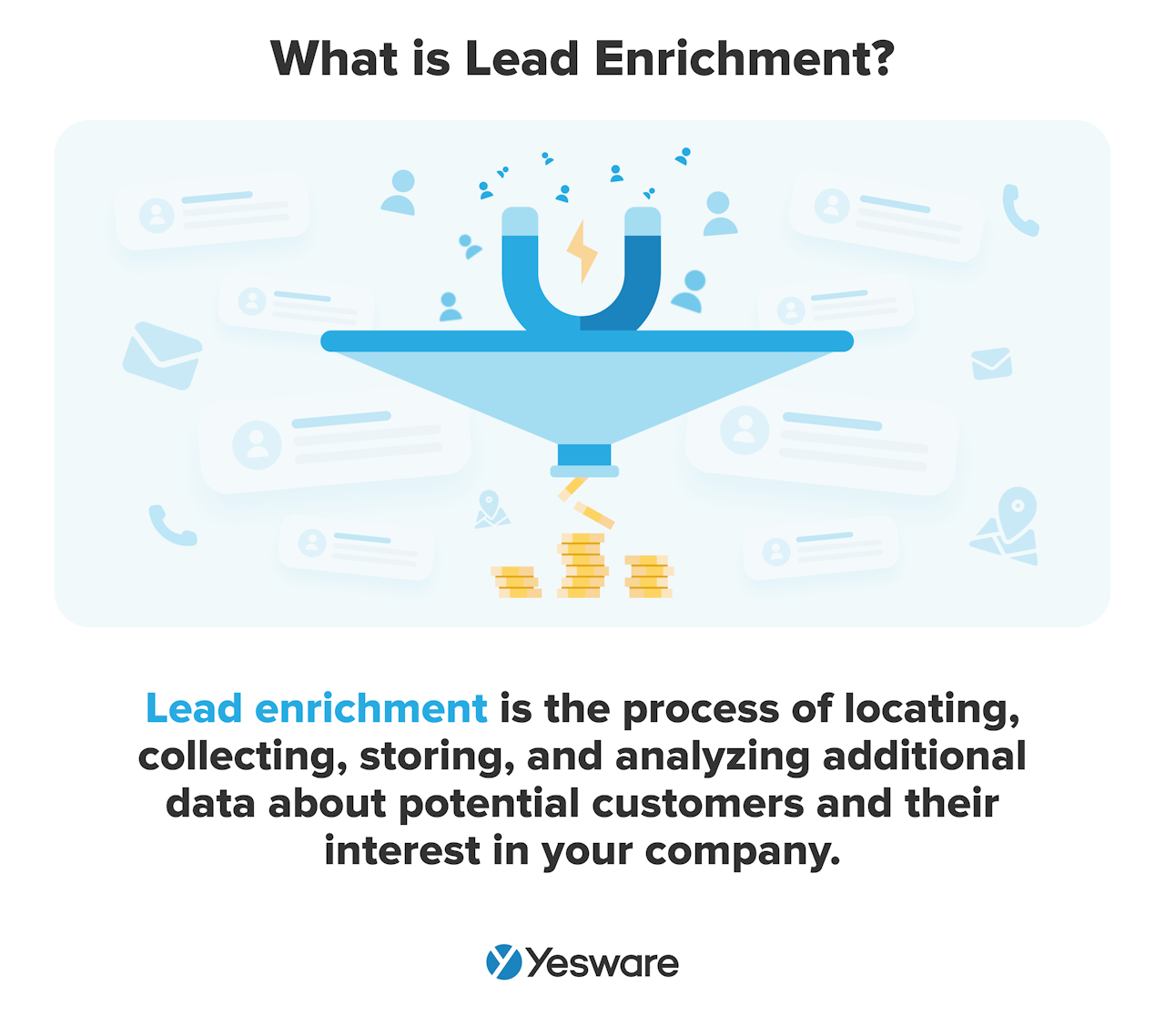 Lead enrichment is the process of locating, collecting, storing, and analyzing additional data about potential customers and their interest in your company.
Lead enrichment is the process of locating, collecting, storing, and analyzing additional data about potential customers and their interest in your company.
In many sales scenarios, leads will offer a limited amount of basic information about themselves when they first make contact with you. They might, for example, fill out a form with their name and email address.
Lead enrichment is the process of adding additional information to the profile of whatever you already know about the lead.
This process helps sales teams make better-informed decisions about leads using as much data as possible.
All sales teams would be well-served to create, optimize, or perhaps even overhaul their lead enrichment process to ensure their practices are generating the kind of insights sales reps need to navigate the sales process with confidence and preparedness.
Lead Enrichment in the Sales Process
Lead enrichment is particularly important for the lead qualification process.
Research shows that 50% or more of all leads are a bad fit; additional lead data can help sales reps save time by enabling them to quickly and accurately identify which leads should stay in the pipeline and which can be disqualified early (before they have a chance to use any of a rep’s resources).
Lead enrichment also helps with later stages of the sales funnel, as detailed lead data helps sales reps create personalized buying experiences and solutions that are highly targeted to meet each buyer’s needs.
And, knowing how important personalization is to the sales process, the importance of thorough and accurate lead enrichment cannot be understated. 
It’s also important to note the way lead enrichment helps the sales process overall, simply by helping ensure accurate and up-to-date data. You’d be surprised at how consequential bad data can be.

For some, this concept may seem glaringly obvious — most competent salespeople know that the more they know about a lead, the smoother the process will be (and, ultimately, the happier the customer will be at the end of the process).
That being said, don’t glaze over this topic; the savviest sales teams leverage lead intelligence with ease.
Understanding Lead Data and Its Impact
The idea of lead enrichment may seem overwhelming when you think about the sheer amount of data that’s publicly available on the web — not to mention all of the other “stuff” that a powerful lead enrichment tool can dig up.
While it’s true that there’s a virtually limitless amount of data available to sales and marketing teams — it’s just a matter of knowing how and where to look for it — the truth is that most of it can be categorized into three main categories: demographic data, firmographic data, and behavioral data.
Demographic Data
Demographic data refers to data points about a specific employee at the company: their name, age, gender, role at the company, decision-making power, etc. 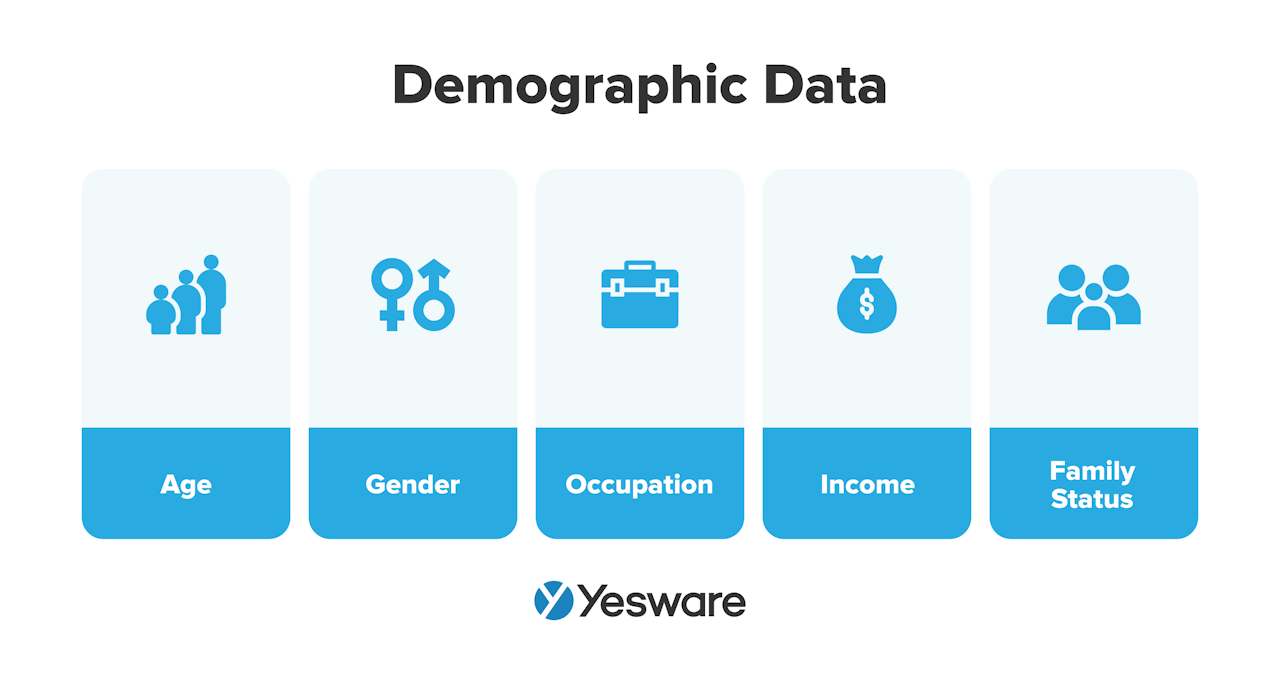
Firmographic Data
Firmographic data is information about the overall company, like number of employees, location, industry, annual revenue, etc. 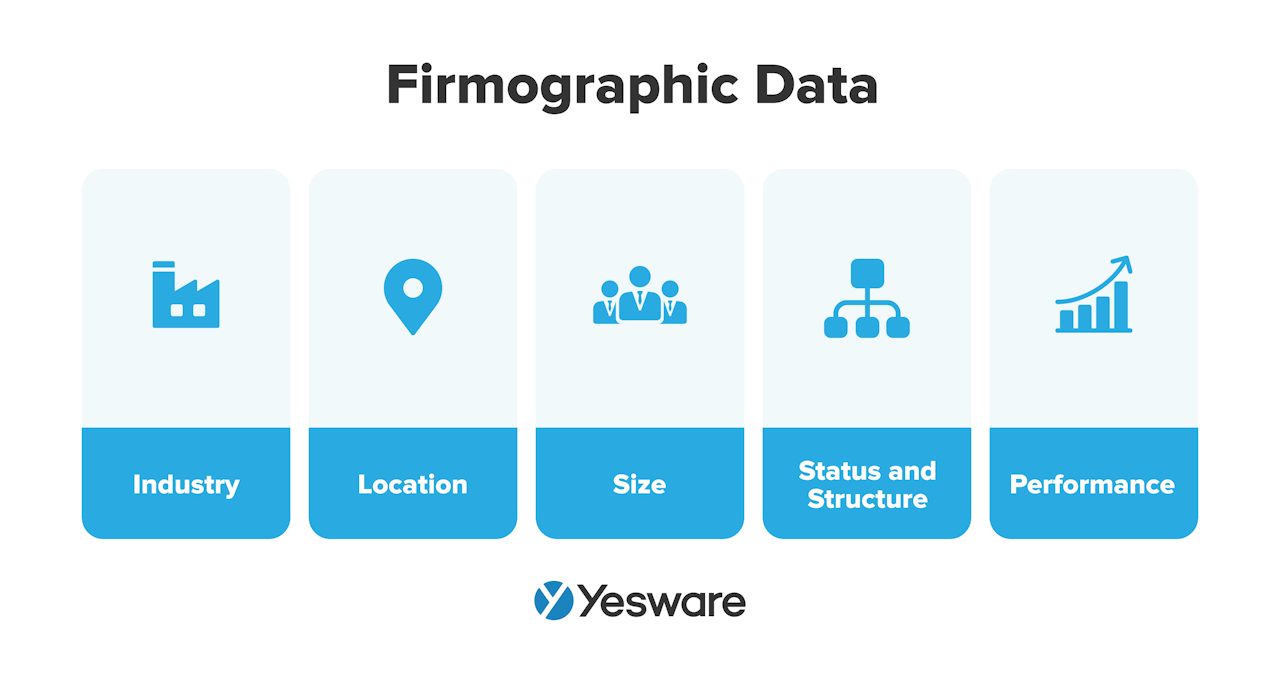 This is the kind of information you’d usually find in an ideal customer profile (ICP).
This is the kind of information you’d usually find in an ideal customer profile (ICP).
Some sales teams also opt to include technographic data in this category or even make it a category of its own. Technographic data is information about an organization’s tech stack — what platforms they’re using, features, integrations, etc.
Behavioral Data
Behavioral data is information about how a lead behaves when they interact with your brand.
Do they visit your website, for example? If so, which pages did they visit? How long did they stay on each page? Did they fill out a form? Did they reach out to a rep? 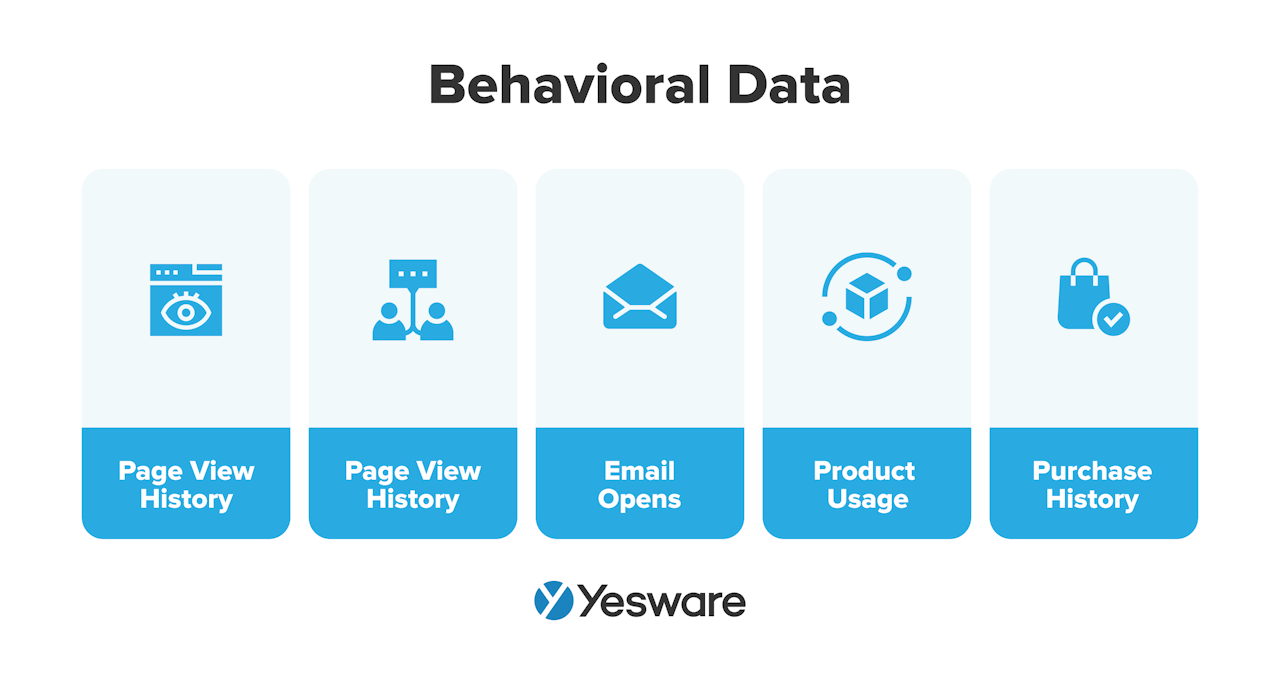 Different behaviors will indicate different things depending on your buyer’s unique personality, so be sure to align sales and marketing to determine which behaviors are most meaningful for your particular buyer persona.
Different behaviors will indicate different things depending on your buyer’s unique personality, so be sure to align sales and marketing to determine which behaviors are most meaningful for your particular buyer persona.
Each of these three types of data plays a different role in lead enrichment, depending on the specifics of your ICP and the specific buyer persona interacting in the sales process.
There are also three general ways to access lead data: first-party (manual web search of social media or databases like LinkedIn, Crunchbase, Google, company websites, spreadsheets, CSVs, etc.), third-party (outside data provider who scrapes the web), and user-generated (e.g., form submissions).
Each type and source of lead data helps fill in a gap in how complete a lead’s profile is, and paints a more complete picture of the potential buyer. This, in turn, helps marketers design more effective campaigns, and sales reps create highly tailored sales processes that speak even more directly to the unique needs and characteristics of each buyer.
Benefits and Challenges of a Lead Enrichment Program
A thoughtful and thorough lead enrichment program can greatly improve the effectiveness and efficiency of your lead generation process, as well as your sales process overall.
The benefits are numerous, and teams who develop a robust and efficient lead enrichment program will see a number of benefits, including better close rates and ROI.
That being said, there can also sometimes be challenges involved in the process of enriching leads, including integration concerns and increasing concerns about privacy.
Let’s take a closer look at some of the benefits and challenges of a lead enrichment program.
Benefits
The benefits of lead enrichment are varied and ongoing when teams can optimize the process.
At the beginning of the funnel, lead enrichment improves the lead generation process. It helps refine the way you target potential customers from the start, so you spend less time learning useless information about bad leads (who will ultimately be disqualified anyway) and more time on lead scoring and lead segmentation for good-fit leads.
The more that sales reps know about their leads, the more they can tailor their sales pitches to each individual prospect. This increases the likelihood that the sale will close.
These improvements in targeting and personalization will inevitably shorten the sales cycle and increase both the speed and the rate of closing.
Lead enrichment improves teams’ “speed to lead.” In other words, it decreases the time it takes for a sales rep to contact leads after they engage with your brand. Research shows that the lead who reaches out the fastest is most likely to get the sale — and the faster you reach out, the better.
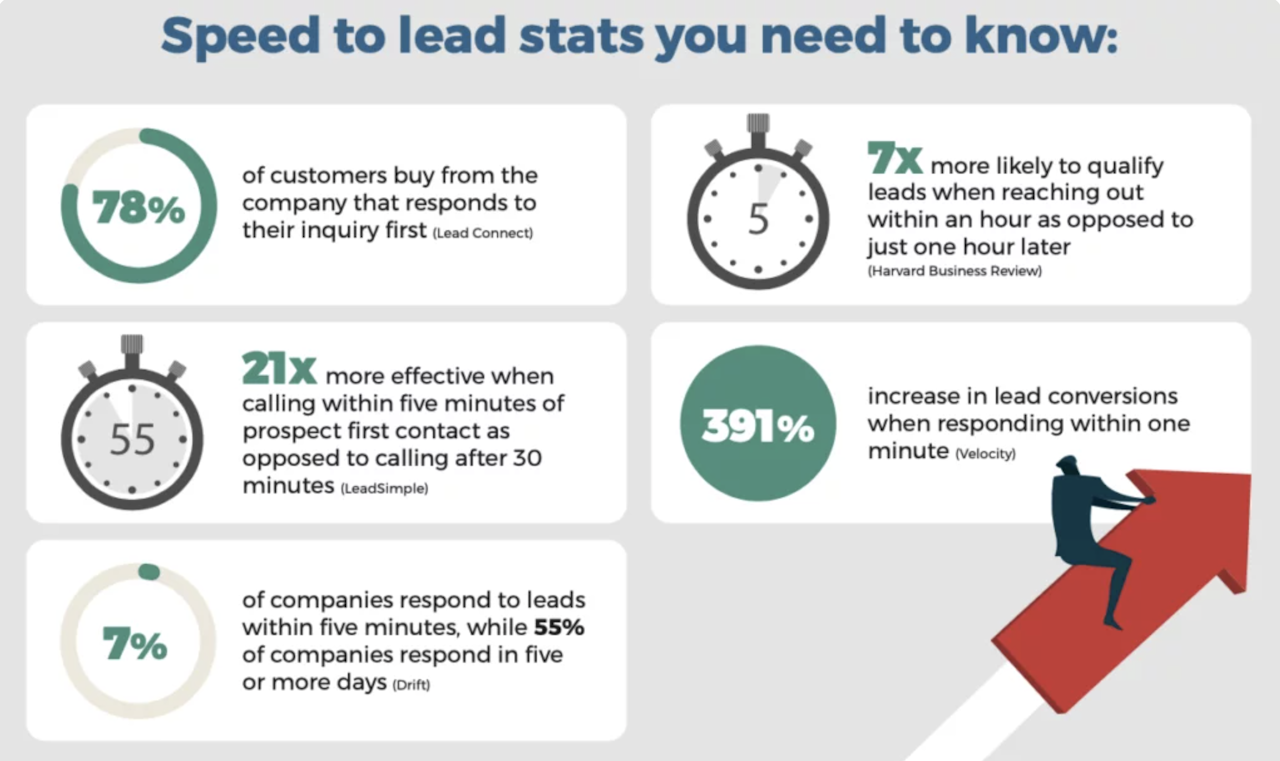
Lead enrichment tools can improve your speed to lead so that you reach out as quickly as possible, with as much information as possible.
Lead enrichment also improves the efficiency of the lead scoring and lead routing processes.
The bottom line is that bad data costs over $3 trillion annually. Outdated and/or incomplete data is an expensive problem in terms of time, effort, and money; lead enrichment helps alleviate a lot of that.
Challenges
Though it’s not to say that lead enrichment isn’t worth it — it always is — there can be some challenges involved in the process. But the more your team educates itself about how to navigate these challenges, the more successful you’ll be.
First, it’s important to ensure that you have adequate processes in place to ensure the accuracy of the data you collect.
Many lead enrichment tools are automated, which can make them extremely powerful and efficient — but it also means that these tools are at the mercy of their online sources. The tools are only as accurate as the information available to them.
And, for teams that use manual lead enrichment processes, data input is a real concern; it can be a challenge to develop and enforce standardized data input practices that uphold accuracy and timeliness.
Another challenge is privacy. It’s extremely important that sales and marketing teams are meticulously compliant with the most up-to-date privacy policies around data collection and storage.
Tip: Find out what is and isn’t working in your sales process, and what you should be doing more of – all in our ebook below.
 Sales Engagement Data Trends from 3+ Million Sales ActivitiesLooking at millions of tracked email activity over the past few years, this ebook is filled with our top studies and findings to help sales teams accelerate results.
Sales Engagement Data Trends from 3+ Million Sales ActivitiesLooking at millions of tracked email activity over the past few years, this ebook is filled with our top studies and findings to help sales teams accelerate results.
How to Utilize Lead Enrichment in Your Marketing Strategy
Lead enrichment is a broad term, and encompasses a wide variety of buyer and seller activities, research, and technological processes.
No matter where your team is in its development of lead enrichment practices, there is always something more you can do that will further improve and enhance your results.
Data Collection
For teams just beginning their lead enrichment initiatives, start by identifying ways that you could potentially find data about prospects.
This doesn’t need to be complicated; think about all of the ways you currently research potential buyers before sales calls.
Social media profiles, especially LinkedIn, can offer a wealth of professional and personal information that will help enrich their lead profile.
Some leads take their own initiative and offer their data through opt-ins like web forms and surveys.
There are also lead enrichment software tools (more on that in a minute) that can help collect additional lead data.
Regardless of your sources, the backbone of lead enrichment is data collection — make sure this part of the process runs seamlessly.
Data Enhancement
Most sales teams that are beyond the first few weeks of operation are likely already collecting a good amount of lead data.
For great lead enrichment, though, that’s only the beginning.
The next step for marketing and sales teams is to enhance their data. This means processes like:
- Data validation: The process of verifying the accuracy of lead data
- Data appending: The process of adding additional information about a lead from a new data source
- Data cleaning: The process of removing incorrect and duplicate data; or, fixing incomplete data
Lead enrichment is a continuous process, and data collection and data enhancement should be scheduled on a regular basis.
Lead Nurturing
The lead enrichment process actually helps all stages of the sales process, as it hums along in the background via lead nurturing.
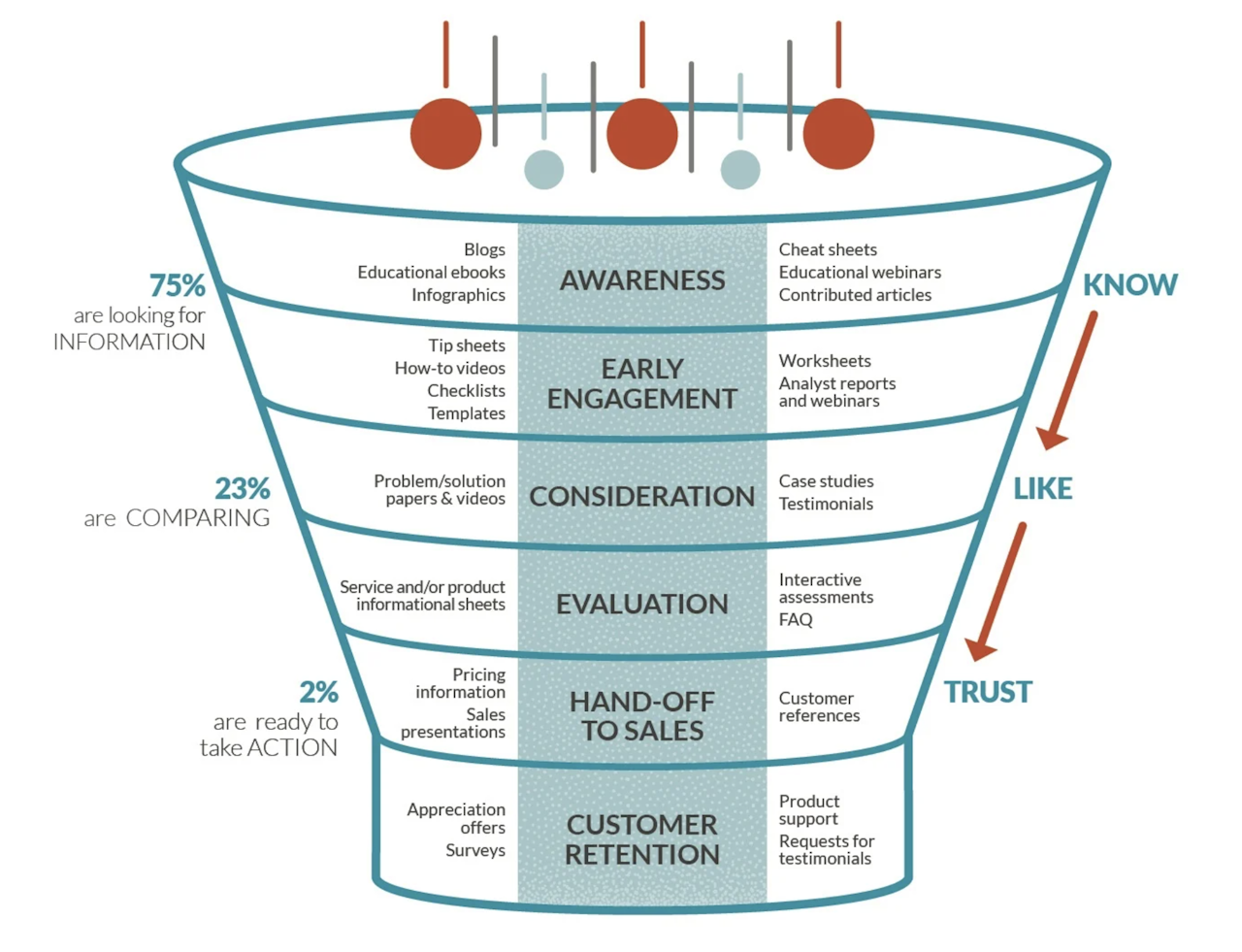
Lead nurturing is the process of creating and maintaining value-based relationships with interested prospects who may or may not be ready to make an imminent purchase. It can help sales and marketing teams know the exact right content to use for the exact right prospect at the exact right time.
Enrichment Tools
There are many lead enrichment tools that can level up your overall lead enrichment processes. Some of them you’re likely already using, like a CRM platform or other marketing automation (MA) tools. These are often equipped with data enrichment capabilities that can help fill in at least the basics of each lead profile.
There are also many specific data enrichment software platforms that are designed to scour the web for hard-to-find data points and details that can give marketers and sellers the leverage they need to make personalized connections with prospects. Recent advancements in artificial intelligence (AI) and machine learning have made possibilities for data collection virtually limitless.
How to Tell if Your Lead Enrichment Program is Successful?
There are a number of sales metrics that can help shed light on whether your lead enrichment program is successful.
- Conversion rates: Ultimately, the success of your lead enrichment program will be reflected in your conversion rates, both the overall rate as well as conversions for each stage of the sales funnel. The more you know about your leads, the more likely your sales efforts will resonate with them — making them that much more likely to convert.
- Lead quality/(Dis)qualification rate: Another telling sales metric is your lead disqualification rate. In many ways, effective lead enrichment is all about filtering out bad leads based on highly specific information. Without lead enrichment, this kind of insight often comes late in the sales process, when reps have already invested (read: wasted) a lot of time.
- Return on investment (ROI): If you invest in any lead enrichment tools, it’s important to keep track of how much money you spend on implementing/maintaining it versus how much more revenue you generate as a result of implementing it.
- Cost per lead: It’s important to keep careful track of how much marketing spends to acquire each lead. You’ll want to define this cost for both marketing-qualified leads (MQLs) and sales-qualified leads (SQLs).
Yesware Can Help Enable Your Sales Teams
Yesware helps sales reps connect seamlessly with buyers — and that starts with a deeply-enriched contact profile.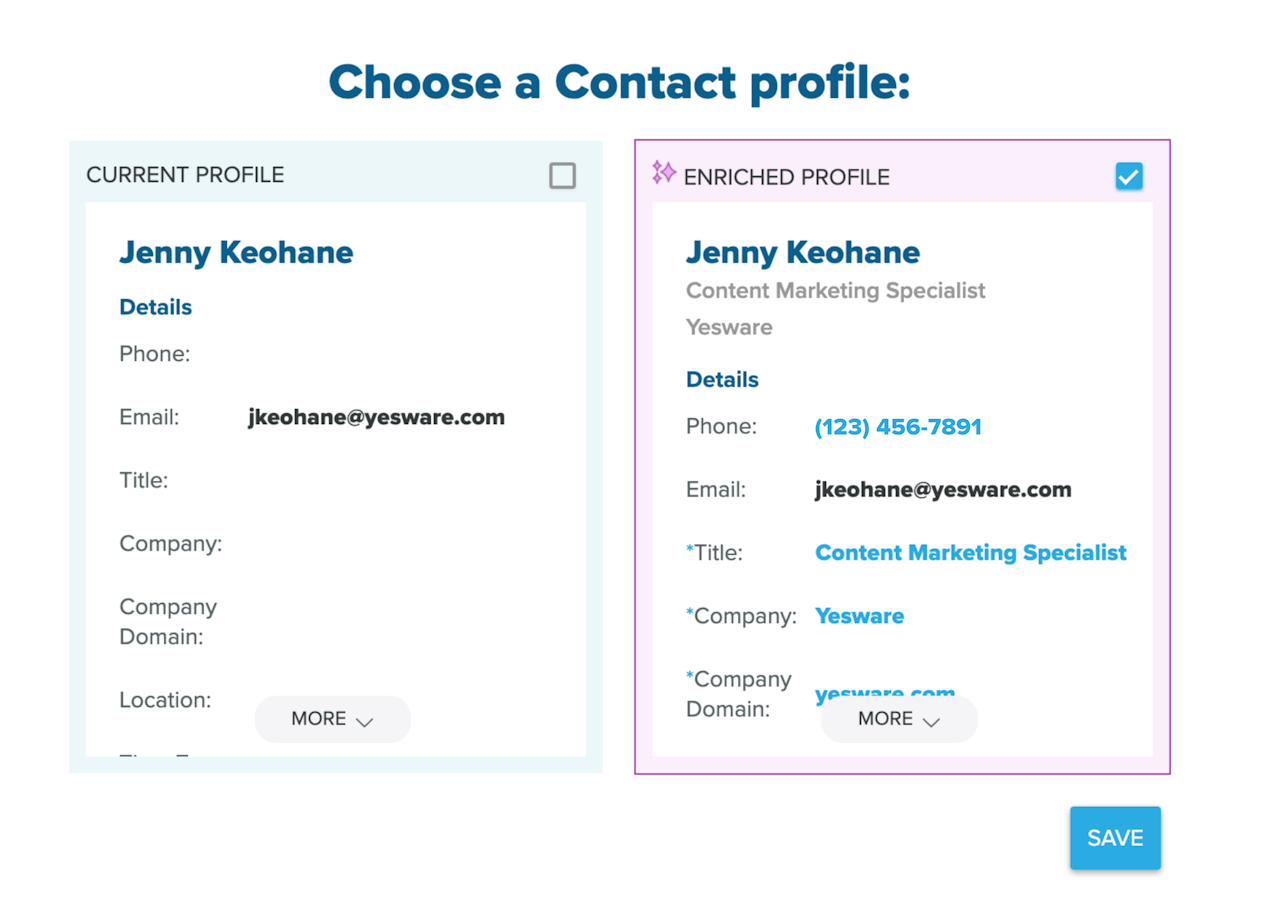 Yesware’s Contact Enrichment feature allows you to enrich your contacts with a single click right from your inbox. All the buyer data you need (plus campaign engagement and call log notes), directly at your fingertips.
Yesware’s Contact Enrichment feature allows you to enrich your contacts with a single click right from your inbox. All the buyer data you need (plus campaign engagement and call log notes), directly at your fingertips.
And, with Yesware’s strict adherence to GDPR and CCPA policies, you can rest assured that all of your (and your buyers’) data is safe and secure.
Do you have any specific lead enrichment practices? Which lead enrichment tools does your team use to assist the process?
Get sales tips and strategies delivered straight to your inbox.
Yesware will help you generate more sales right from your inbox. Try our Outlook add-on or Gmail Chrome extension for free, forever!
Related Articles
Casey O'Connor
Casey O'Connor
Anya Vitko
Sales, deal management, and communication tips for your inbox

